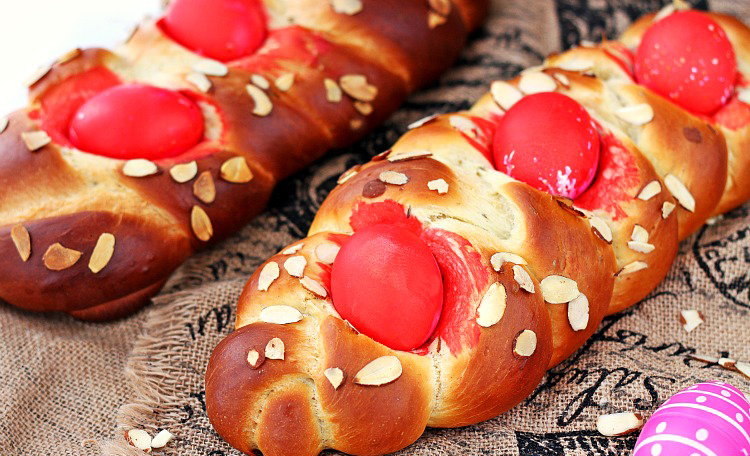The streets of Greece and Greek Orthodox communities throughout the world ring with happy voices sharing “Christos Aneste” ! – Christ is Risen!
Easter time, from the carnivals that come before the Lenten fast through Holy Week and the celebrations of Easter, is a special season in Greece.
Greek Orthodox Easter 2016
Since the date of Greek Orthodox Easter is based on a modified Julian calendar (while the Western world uses the Gregorian calendar), the festivities sometimes do not occur at the same time as other Christian Easter celebrations. Sometimes the dates can be as much as a month apart.
In 2016, Greek Orthodox Easter is celebrated on Sunday, May 1st, more than a month later than Easter observances in the Western church — and marked by unique traditions that make Easter in Greece different than Easter celebrations in other lands.
Greek Lenten & Easter Traditions
Greek foods and traditions mark the season as uniquely Hellenic. The history of Greece traces back far past the beginnings of Christianity, but from the very earliest days of the Christian faith the Islands of Greece and the Greek people have embraced these beliefs and made them part of the Greek heritage. Of all the Christian feast days, Easter is the greatest time for foods, feasting and celebration to people in the Greek Orthodox faith.
If Apokria, Kathari Deutara and Lenten Sunday feasts are the preliminaries for Greek Easter, Holy Week is the peak of these activities. On Holy Thursday the bright dyed red eggs that are symbolic of Easter in Greece are prepared. Tradition says that the Virgin Mother, Mary, dyed eggs this color to celebrated the Resurrection of Christ and to celebrate life. Every Greek family prepares these eggs as part of the Easter Sunday Resurrection Table.
Greek families are enjoy eating koulourakia – butter twist cookies and tsoureki – traditional sweet bread for the Easter feast.
Holy Saturday is filled with anticipation of the religious celebration of Easter and the Resurrection. People begin to gather in the churches and squares in cities, towns and villages by 11:00 p.m. for the Easter services. Large white candles are carried by just about all of the faithful. At midnight the church bells toll as the priests announce Christos Anesti!…Christ is Risen! Fireworks are set off, in some areas gunshots are fired and the each person in the crowd answers with the joyous responses of Alithós Anésti – Truly He is risen.
Greek Easter – A Time for Family
The people leave the churches and crowded squares and make their ways to homes of friends and relatives. The candles they carry are placed in each home and burn through the night to symbolize the Light returned to the world. Celebrations continue with the cracking of eggs and The Resurrection Table. The Kokkina – pasxalina avga – dyed red Easter eggs that are found on the Resurrection Table become pieces of a traditional game. Each person takes an egg and challengers attempt to crack each others’ eggs. The breaking of the eggs is meant to symbolize Christ breaking from the Tomb. The person whose egg lasts the longest is assured good luck for the rest of the year.
The main dish at the Easter Table is the Easter lamb or goat (usually kid). Served in honor of the Lamb of God who was sacrificed and rose again on Easter, a whole spiced lamb roasted over a charcoal fire is the most traditional of Greek Easter foods. The Easter Sunday celebration lasts through the day while visits are made to family and friends and the Easter feast is shared with every guest.
Each person that enters the home is greeted with Gia to kaló tis iméras! – “For the good of the day!” with a plate of food and an invitation to join in the feast.
Kaló pásha …Happy Greek Easter!
Holy Transfiguration Greek Orthodox Church is located at 3431 Trickum Road in Marietta / East Cobb.







